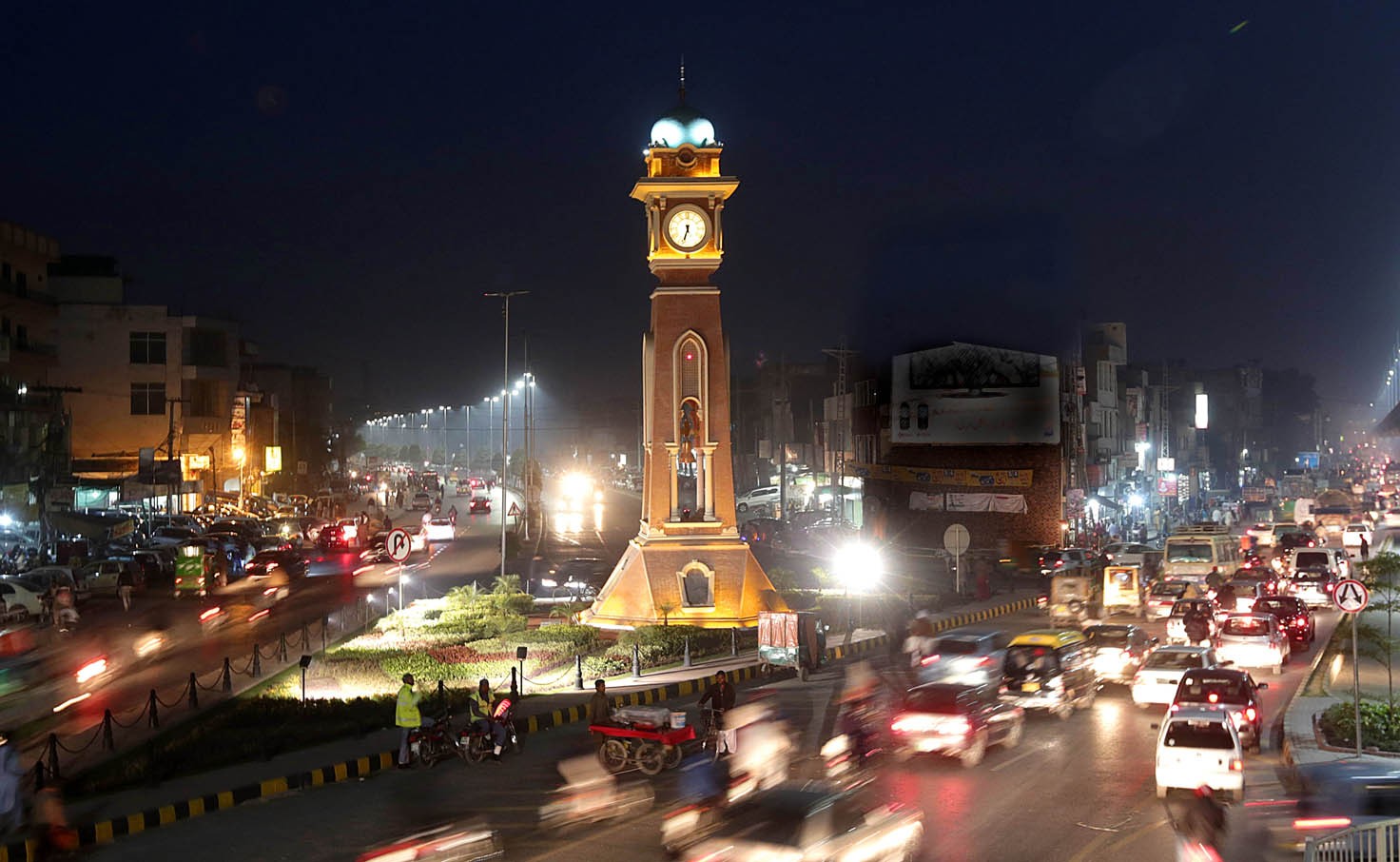
The myriad clock towers dotting the city have mainly a decorative value, reminiscent of the Raj

In an age where everyone has access to a wrist watch or a cell phone that tells the time, the futility of public clock towers and watches mounted on top of the buildings of the city would be reduced to mere decorative value. Especially since these clock towers and turrets are a glorious relic of the British Raj and still fascinate the tourists and students of architecture for their design and significance.
The ‘twin’ clock towers at the Lahore Railway Station are said to be the oldest in the city, built circa 1859. They not only act as a time indicator but also remind us of the stupendous architectural expertise of the British builders.
Unfortunately, these rectangle-shaped towers are facing neglect at the hands of the Railway authorities. One of these has only one clock mounted on its front, whereas the other is without a clock on its two sides. These towers once had clocks on all their four sides.
Assistant Station Master, Platform No. 4, says on condition of anonymity that the twin clock towers are linked with the master clock fixed at the ASM office.
"Not only the tower clocks but the clocks on the railway platforms and offices are also controlled by the master clock of the ASM office," he adds.
"These clocks are not run manually; everything is computerised and if there is any issue, it is adjusted right from the office of the ASM and the watch follows the time of the master clock."
The clock tower at the Government College University (GCU) was built in 1860. It was renovated in 1964 on the occasion of the then college’s centennial celebrations. The GCU clock tower is estimated to be the highest among all clock towers in the city and there was a time when it could be spotted from a great distance. Presently, though, the construction of high-rise buildings, commercial plazas and overhead bridges has partially hidden it.
According to a GCU official, the university management has planned to return the historical clock tower to its original glory. Meanwhile, restoration work of the university building is going on. The services of the Archaeology Department of the Punjab government have been sought in this connection.
The 55-foot tall Qartaba Chowk clock tower was inaugurated by the Law Minister Mian Mujtaba Shujaur Rehman sometime ago. The PHA completed the tower at a cost of Rs10.5 million. Four clocks of four diameter each were fixed on the four sides of the tower. The clock boast a gong weighing about a 100 kilos, sound and automatic lighting system.
The green colour of the tower makes it appear beautiful at night, as its automatic lighting system illuminates the surrounding area.
A Parks and Horticulture Authority (PHA) official says the clock is maintained well. For this purpose, the clock is shut off for two hours every time.
The Town Hall clock, visible especially from Nasir Bagh and The Mall, is another relic of the British times.
Then there is the building of the Punjab Postmaster General which is adorned with a huge clock.
There is a turret at the corner of the General Post Office (GPO) building on The Mall. This smallish but lovely tower has a clock facing the High Court building. Normally, it cannot be seen by the motorists and even by the pedestrians for the reason that there is a huge tree covering the face of the tower.
The Mayo Hospital clock tower is another very popular monument. For patients and their attendants, it’s a "Gharri wali building." The hospital main gate also has a big wall clock mounted on it.
The Fatima Jinnah Medical College, situated on the Queens Road, boasts a rectangular clock. Unfortunately, this one is also not in working order. It’s forever 10:15am here.
Recently, a watch company erected a pole right in front of the main gate of the GCU and mounted four clocks. But two of these are not working.
There is yet another British-era turret at the Punjab University’s College of Art and Design. The University of Central Punjab (UCP) also has a clock tower which is 10-foot high.